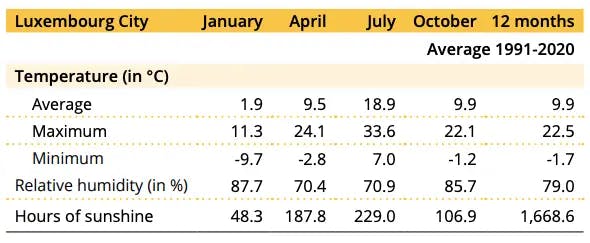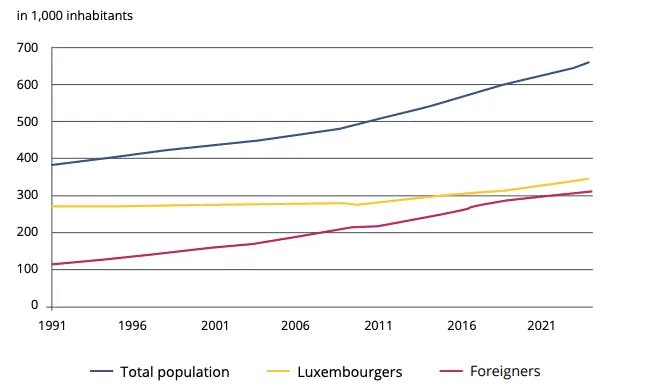Luxembourg in figures: the country's achievements in recent years

Statistiques has published a new 84-page study. It contains the most recent statistics on the Grand Duchy and its inhabitants that have never been published before.
The study covers a variety of factors in the social and political life of the country. For example, the document begins with data on Luxembourg's climate. For the period 1991-2020, the maximum temperature reached the mark of 22.5°C and the minimum temperature was -1.7°C.

Environment
It is well known that the Grand Duchy is rich in unique nature and green forests. However, the authors of the study note that the number of undamaged and therefore healthy trees in Luxembourg has decreased dramatically: in 1990 they represented 60% of the total forest area and in 2022 — 15.4%.

Moreover, the quality of water in the Grand Duchy has declined. For example, in 2009, 7.8% of all water consumed was of good quality and 13.7% was of poor quality. In 2021, these figures will be 0% and 23.6% respectively.
If it is important for you to understand whether you can drink tap water in Luxembourg and you want to know more about the quality of drinking water in Luxembourg, you can read our special article.
Population
In 2023, the population of Luxembourg reached more than 660 thousand people, 47% of whom are foreigners. Most of them are Portuguese (92 thousand), followed by French (49 thousand), Italians (24 thousand) and Belgians (19 thousand).

Life expectancy is also on the rise in Luxembourg. In 1990-1992, the average life expectancy was 72 years for men and 79 years for women. In 2020-2022, these figures will reach 80 and 84 years respectively.
In 2022, 6,495 children were born in the Grand Duchy (3,196 of them girls), 2,475 marriages took place, and women had their first child at an average age of 31.

The capital of Luxembourg has become the most densely populated region (over 132 thousand inhabitants), followed by Esch-sur-Alzette (36 thousand inhabitants) and Différance (29 thousand).
The average monthly income of the inhabitants of Luxembourg is also increasing. Thus, in 2018 it was 5,338 euros, and in 2022 — 6,572 euros per family. The highest salaries were recorded in the municipality of Niederanven — 12,644 euros. And the lowest by median — in Wilz: 3 167 euros. At the same time, the lowest average salary was in Reisdorf: 3,250 euros. The poverty line in the country is 2,265 euros.
Hobby
Luxembourg has recently become one of the best cities for lovers of reading, and the National Library of the Grand Duchy itself has more than 33 thousand subscribers: in 2019, this figure will be 25 thousand.
The inhabitants of Luxembourg also like to go to museums. In 2022, the National Museum of Archaeology, History and Art was visited by 129 thousand people, the National Museum of History — 57 thousand, and the Museum of Modern Art — 99 thousand people.
According to the study, Luxembourgers pay a lot of attention to a healthy lifestyle. Football has become one of the most popular sports, officially played by more than 44 thousand people. Tennis (15,771 people), martial arts (7,050 people), and basketball (6,772 people) are also popular among residents.

Among other things, Luxembourgers love to travel. France has become the main tourist destination with 22% of all trips. It is followed by Germany (12%), Belgium (9%) and Portugal (8%).





